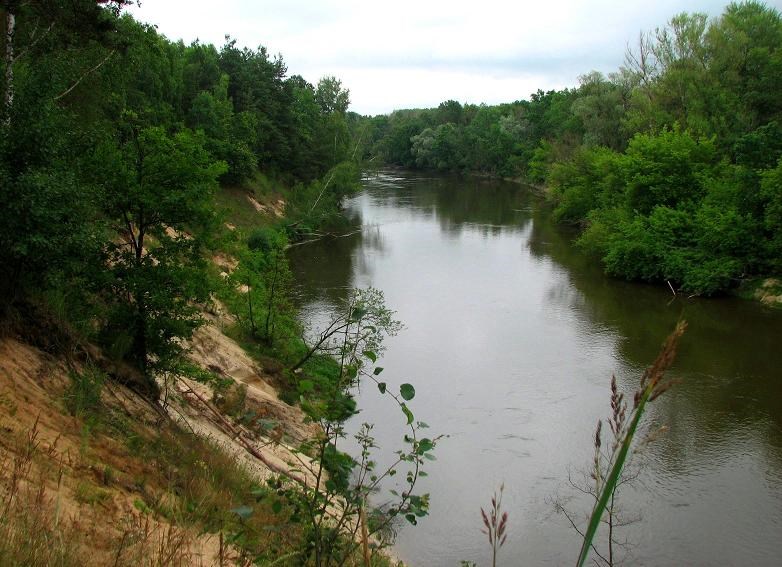Places

A poviat town in the Powiśle Region. The first craftsmanship school on Polish lands was opened here in 1761 by the priest Ignacy Konarski. The town’s showpiece is the Church of Assumption of Our Lady built in the 17th-18th c. featuring Baroque interior décor and polychromes in the altar area. In nearby Niezdów there is a Classicist palace of the Lubomirski Family erected in the years 1785-87. ...

A poviat town in the Lublin Polesie, founded in 1401 as a royal town located on the Jagiellonian trade route connecting Vilnius and Cracow, a venue for many meetings and conventions of Old Polish gentry. The main historic sight is a Neo-Gothic church built in the years 1905-13 with a 16th-century painting of Our Lady called ‘Madonna and Child with the pear’ (representing the Flemish school of painting). Next to the church stands a wooden bell tower built in the 17th c. using the horizontal log technique. ...

It was created in 1984 in order to preserve the unique landscape of the western part of the Solska Forest, one of the vastest forests in Poland extending from the valley of the Vistula River to the eastern state border. It is mostly a coniferous forest with prevalent pines and firs and well-preserved old-growth woods. ...

It covers a lower part of the valley of the Bug River (from Terespol to the Toczna River) and two forests growing on postglacial moraine plateaux. The park is 65 km long and 3 to 5 km wide in its eastern part located in the Lubelskie Voivodship. ...

The natural ecosystem of lakes, ponds and peat-bogs is under special protection in this park. The wetlands in this area feature rare and protected species of plants e.g. the shrub birch (Betula humilis), the downy willow (Salix lapponum), and the broad-leaved marsh orchid (Dactylorhiza majalis), and are a refuge of the European pond turtle. East of the landscape park the Poleski National Park is located. ...

The park stretches over the areas of Central Roztocze and the Biłgoraj Plain. The lay of the land is fairly flat with characteristic plains, small hillocks (up to 320m ASML), dunes, peat-bogs and swamps. Forests account for 85% of the area. River knickpoints forming scenic small waterfalls – a geological curiosity of the park – are particularly impressive on the Tanew River and the Sopot River. These ‘murmuring cascades’ can be seen in the ‘Czartowe pole’ and ‘Upon the Tanew’ nature reserves. Crystal-clear streams of the park are home to the grayling and the brown trout. There ...

A town located on the Giełczew River, 25 kilometers from Lublin. There are many interesting stories connected with the local hill called "Kościelec". Formerly, there was a castle built by the owners of these lands - Orzechowski and Suchodolski families. At the end of the XVI century an Arian church was established, and 200 years later an evangelical church, the permanent ruins of which can be seen till this day. An interesting fact is that in he Holy Trinity Evangelical Church of the Augsburg Confession in Lublin, one can still see the historic pulpit and the brick altar in the style of Loui ...

A small village by the Giełczew River, that in the second half of the XVI century belonged to the Sobieski family. A wooden church of The Sacred Heart of Jesus beautifully blends in with the landscape of the river valley. ...

A village upon the Vistula River connected with a legend about the knight Piotrowin and St. Stanislaus Bishop and Martyr. On a high river escarpment stands St. Stanislaus’ Church, founded in 1440 by the Cracow bishop Zbigniew Oleśnicki, which has remained unchanged in its Gothic style till today. There is also a chapel built next to Piotrowin’s grave from the same period. Another tourist attraction of the village is the local limestone quarry offering a great panoramic view of the Vistula River. ...

Mała miejscowość położona niespełna 10 km od południowej granicy Lublina, skrywa malowniczo położony, zabytkowy budynek. W parku, po prawej stronie (zmierzając w kierunku Strzyżewic) znajduje się dwór rodziny Koźmianów. Tutaj żył i tworzył Kajetan Koźmian – wybitny poeta, krytyk literacki, wyróżniający się przedstawiciel klasycyzmu w literaturze polskiej, działacz polityczny przełomu XVIII i XIX w. Znany jest przede wszystkim z utworów, będących pochwałą prostego, przesyconego pracą życia na wsi oraz liryki wychwalającej osiągnięcia Napoleona. W swojej kari ...
Page 10 of 16










